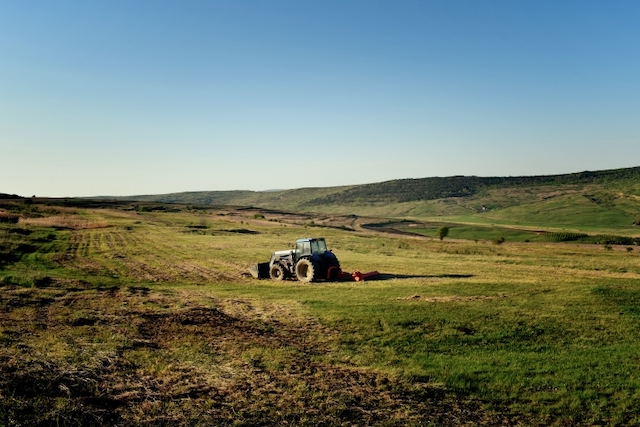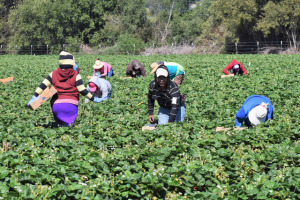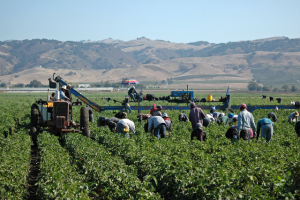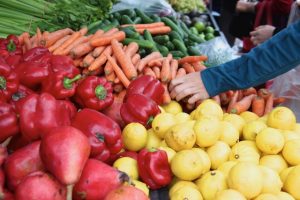
The Unaddressed Crisis in Agriculture
February 14, 2023 Roots of ChangeNeither the media nor policymakers are sufficiently focused on an existential crisis in American agriculture. Farmers and ranchers are an endangered species. As we do for wolves, salmon and whales, we need policies and programs to ensure farmers and ranchers do not die out. With a new Farm Bill on the horizon we must demand changes in agriculture policy. The seeds of change are in place, but they need our tending.
In 1935 when there were just 127 million people in this country the number of farms and ranches peaked at 6.8 million. That meant one farm or ranch for every nineteen people. Today when we have just under 332 million people in the US, there are less than 2.1 million remaining, meaning one farm or ranch for every 158 people. Fewer farms and ranches mean fewer people producing food. You might think that’s okay because modern agriculture is “efficient” as measured narrowly by yield per acre.
But, let’s look deeper. The USDA says eighty-nine percent of the nation’s farms are small family farms with gross farm income of less than $350,000. Many of us complain about high food prices but, depending on the product, farmers and ranchers receive only 10-20% of the retail revenue. This is because the concentration in processors and retailers shrinks the number of buyers decreasing competition, driving farmgate prices down. The vast majority of food sales revenue goes to the processors, middlemen and retailers. The rising costs for land, energy, water, seed and other inputs needed to produce crops and livestock leaves poverty wages for agricultural families. This why eighty-two percent of farm-family income is earned off the farm from nonfarm jobs. On top of the low farmgate revenue, farmers and ranchers are facing climate impacts. In August of 2022, three quarters of the nation’s agriculture producers reported lower yields due to drought. Then there is the shortage of farmworkers due to the broken immigration system. Farm debt is rising while net farm income in 2023 is expected to decline by over eighteen percent.
Those of us committed to a bright future for agriculture know that the nation has too many farmers and ranchers living on the financial edge and too few in number to sustain the food supply into the future. It may be obvious to you that over ninety percent of the nation’s farmers and ranchers identify as white men. I was somewhat relieved to learn fifty-six percent of all agricultural operations have at least one woman who is a decision maker on the team. When you consider race in agriculture, the situation is even more concerning. According to the USDA, a bit over six percent of our primary producers are Latino. Less than four percent identify as Black, Asian or Native American. Despite this reality, both advocates for food system change and government policy seek an influx of women, Black, Indigenous and people of color to boost the farmer and rancher population. This is a real challenge given land prices and all the above factors.
Existing policy is paltry. The USDA has the New and Beginning Farmers and Ranchers Development Program, which is part of the Farm Bill. It provided $24 million dollars in 2022, granted to 45 organizations across the nation, but that is a miniscule sum given the scope of the problem. California also has its Beginning Farmer and Farmworker Training and Urban Agriculture programs, but Governor Newsom is proposing to gut them in the 2023-24 budget.
We must do more, but what exactly? There are three big changes needed. First, the federal government must end the concentration in processing, distribution and retailing. We need to bust the trusts like Teddy Roosevelt did back at the start of the 20th century to increase farmgate prices. Second, we need billions of dollars invested at the local, state and federal levels to train, incubate and mentor new and beginning farmers, a large percentage of whom will be women, Indigenous, Black and people of color (check out the February 2023 Flipping the Table podcast with Leonard Diggs to learn about one such program). Finally, we need a strategy and programs to finance the transfer of existing agriculture operations and lands from those retiring to our new and beginning farmers and ranchers. This shift in ownership must be integrated with policies that re-regionalize the food system. Every community needs a food shed based on a diversity of crops and livestock, scale of operations and facilities for aggregation, food recovery and various types of processing. Re-regionalization will bring resilience and opportunity to the next generation of agriculturalists and good food to people.
Some will argue, small and midsized farms are not economically efficient. Advocates like me will rebut that argument with the fact that a desire for low prices has meant societies have created many forms of subsidy stretching back millennia. American commodity agriculture especially depends on subsidies. The problem is the vast majority of subsidies are designed to aid the largest operations and their allied food processors, banks and insurance firms. A drive through small towns in America’s rural regions reveals how they have been devastated by the last 65 years of agriculture policy that favors the big.
The time for change has come. A new Farm Bill will be created over the next two years. We must replenish the precious pool of farmers and ranchers by altering policies to favor the new, beginning, small and midsized producers. If cultivated through good policy, they will deliver food, fiber and ecosystem services that increase community resilience and rural vitality while improving human health and healing the ecosystems on which life depends.
Photo: RGR G., Pexels
crisis in agriculture, farm bill, Leonard Diggs, NSAC


